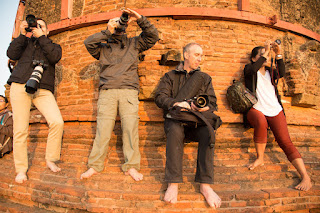With the workshop completed, we had a full day Sunday before our late night flight to Seoul and then home. Five of us were on the same flight out, so we spent the day seeing some things we missed on the tour. Our first stop was the National Museum.
The museum has so much potential to be a showcase for Burmese history. They have great artifacts on display from the jewel encrusted throne of the last king of Burma, to ceremonial regalia and scale models of the royal compound. With all these interesting items, what's missing is great displays for them. The lighting is poor and the explanation cards could be better.
The museum has so much potential to be a showcase for Burmese history. They have great artifacts on display from the jewel encrusted throne of the last king of Burma, to ceremonial regalia and scale models of the royal compound. With all these interesting items, what's missing is great displays for them. The lighting is poor and the explanation cards could be better.
Our next stop was at the Rangoon House of Tea modeled after a tea house that might have been around during the colonial period. The food was excellent and it was filled with both Westerners and locals. I would highly recommend it.
Asia is in love with foot massages. These can range from a nice rubdown to a vigorous pressure point affair. The place we went to would fit right in at home with nice, plush recliners and hot tea served during your treatment. It starts with a nice soak in a wooden tub floating with rose petals. You then move on to massaging and slapping (making a pretty humorous noise) of the legs and feet. The whole process takes around 1 1/2 hours and usually involves a nap during the treatment. What a nice way to end a wonderful trip.
Next: Tieing up a few loose ends

























































